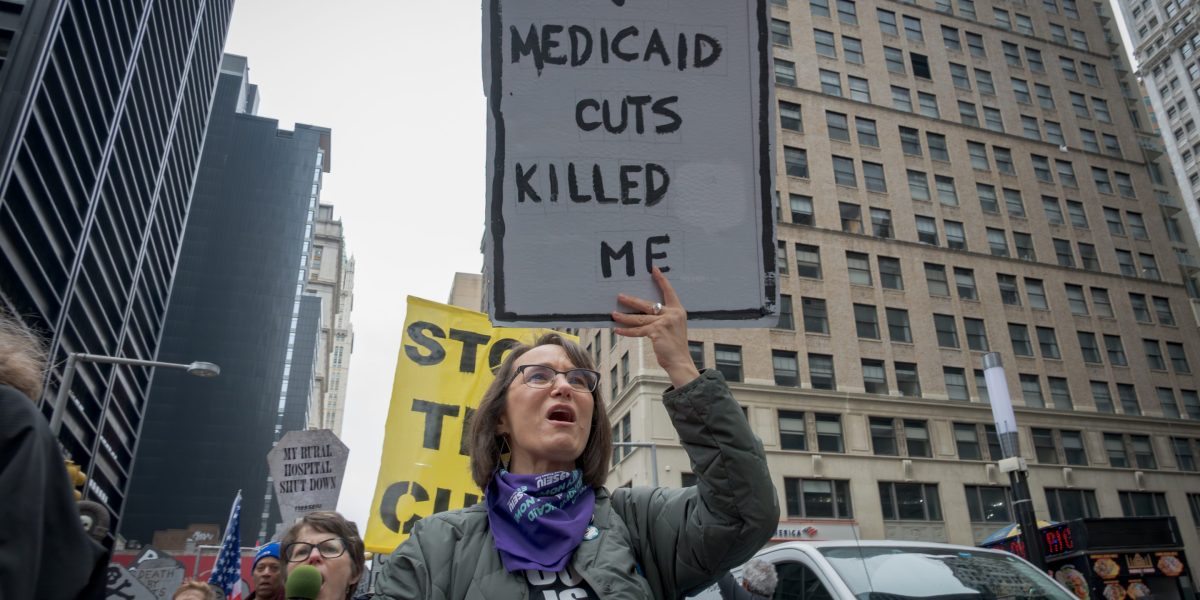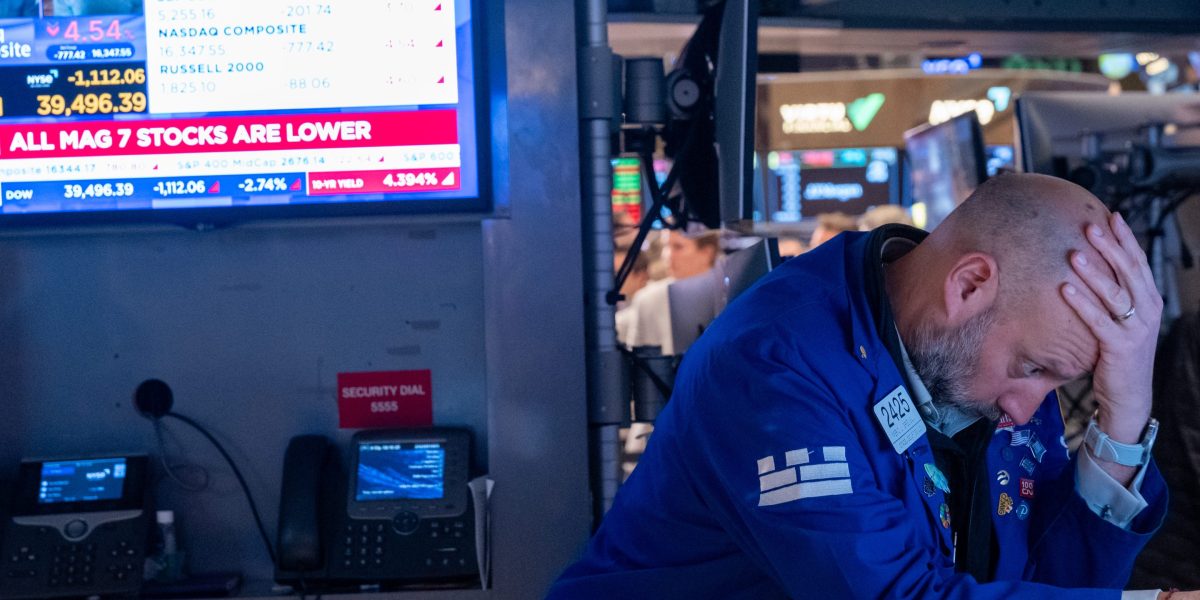- All the major U.S. stock market indices would need to have strong ends of the year just to finish flat. While that’s not impossible for the S&P 500, the Nasdaq 100, and the Dow, it usually only happens in years when the market is on an upswing, not experiencing a downturn as it is now.
Since President Donald Trump announced his sweeping tariff policy over a week ago and sent global markets into turmoil, the U.S. stock market has lost trillions in wealth. All the major indices such as the S&P 500, the Nasdaq 100, and Dow Jones Industrial Average are down for the year after markets reacted extremely negatively to Trump’s new trade policy.
The major selloff induced by the new Trump policy reversed what was shaping up to be another good year in the markets. Investors and analysts had expected the U.S. stock market to continue to deliver solid returns, even if it did slow down from the record-setting pace of the previous two years. In fact, Trump’s election brought a new wave of market optimism, as initially stocks soared on the back of what many had viewed as a pro-business president.
Now the opposite is true. Markets are sinking on the back of the uncertainty Trump injected into the U.S. economy since he returned to the White House.
To make up for the losses they’ve incurred so far this year, the major U.S. stock indices—the S&P 500, Nasdaq, and Dow—would all have to rally to an extent that isn’t unheard of, but has only ever happened in good years.
However, a strong year in 2025 seems unlikely. Since the market crash caused by Trump’s tariff announcements, most major Wall Street banks have revised their annual forecasts for the economy to reflect the ongoing downturn. Some of those banks even called for a recession as the stock market slide coincided with cratering bond markets and a devaluing of the U.S. dollar.
Through Friday, the S&P 500 is down 8.8%—a stark reversal from the rip-roaring gains of 2023 and 2024 that together accounted for the best two-year stretch since 1998.
In order to turn around that loss and end the year flat, the S&P 500 would need to rise 9.4% from its closing price on April 11 to Dec. 31. In that case, investors won’t have lost any money, but they wouldn’t have gained a cent either.
A similar or better growth rate from April 11 to the end of the year isn’t completely out of the ordinary for the S&P 500. In fact, it’s happened 22 times since the modern day version of the index was established in 1957. While that sounds like good news, investors shouldn’t be too quick to rejoice. The S&P 500 only grows 9.4% or more from April 11 onwards in bull years, not during down markets like 2025, according to data supplied by wealth manager AssetMark and Fortune’s calculations. The worst performing such year, 2016, had a total annual return of 12%. The best year, 1958, had a juicy 43.4% annual return. Across all 22 years that fit that criteria, the average annual return was 27%.
In other words, the S&P 500 soars from April through December when the market is ripping, not when it’s limping toward a zero percent return.
To be sure, there is a notable precedent for a market crisis early in the year turning into a year of major gains. In 2020, the year of the COVID-19 pandemic, the S&P 500 had the best April 11-to-December performance on record, with gains of 34.6% over that time period. That led to an overall annual return of 18.4%. However, those market slumps were caused by different reasons. In 2020, markets reacted to the spread of a highly infectious disease for which there wasn’t yet a cure, while this time around they were responding to a trade policy intentionally implemented by an elected official.
Potential recoveries for the Nasdaq and the Dow have the same dynamics as those of the S&P 500. They need to rise by a reasonable rate, but one that only happens when the stock market is flourishing, not when it’s trying to resuscitate itself.
Analysts now expect 2025’s stock market performance to be worse than they forecasted at the start of the year. In December 2024, the Wall Street consensus for the S&P 500 had a median price target of 6,625, according to data from LSEG. That would have meant a 12.9% increase for 2025 based on where the S&P 500 opened on Jan. 2.
Over the last week, a slew of banks lowered their forecasts for the S&P 500 far below the median from the start of the year. BMO revised its slightly bullish call of 6,700 to 6,100. Goldman Sachs cut its forecast twice this year, from 6,500 to 6,200 and then again to 5,700. The second Goldman revision would imply a loss of 2.8% this year. UBS and RBC also expect a loss for the year.
In 2025, the Nasdaq is down 10.9%. The decline is a 180 from where the index started the year, topping 22,000 in February. The Nasdaq would need to rise 12.2% to end the year where it started at 20.975.62. It’s not a rarity to see a 12% rally from April to December. It’s happened 20 times since Nasdaq was established in 1985, according to AssetMark’s data and Fortune’s calculations. But again, it only happens in positive years. The worst year with at least a 12.2% run-up in our time frame, 1992, had an 8.9% annual return. The best return of the batch was 1999, which had a 102% return.
The Dow, which was spared the worst of the crash, is down 5.1% in 2025. In order to finish the year without a loss, the Dow would need to rise 5.4% for the rest of the year. The Dow’s historical performance might offer investors a sliver of hope. Out of the 35 times since 1958 when it has grown at least 5.4% from April 11 to December, there was one year the index didn’t finish positive. In 1984, the Dow grew 7.1% over that span, while ending the year with a total loss of -3.7%. But for the most part, the 35 previous years that fit our criteria did coincide with strong growth. The average for the Dow in those years was 18.6%. The best year was 1975, which had a 38.2% return for the year.
This story was originally featured on Fortune.com
Source link

 Entertainment8 years ago
Entertainment8 years ago
 Politics8 years ago
Politics8 years ago
 Entertainment8 years ago
Entertainment8 years ago
 Entertainment8 years ago
Entertainment8 years ago
 Tech8 years ago
Tech8 years ago
 Tech8 years ago
Tech8 years ago
 Tech8 years ago
Tech8 years ago
 Politics8 years ago
Politics8 years ago







